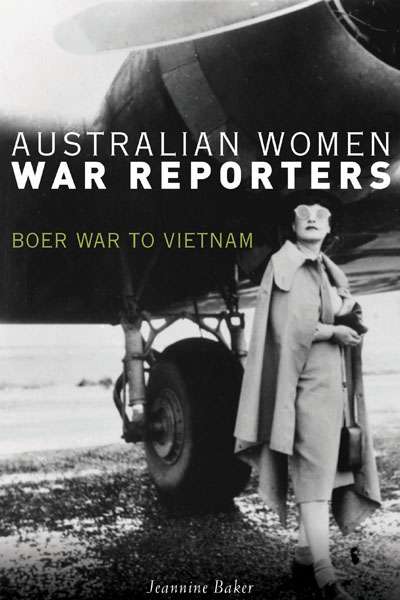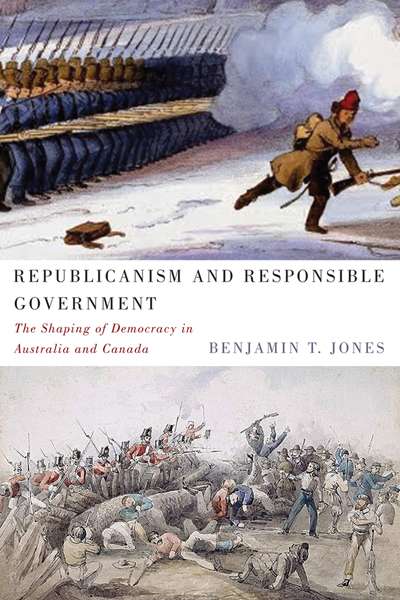Australian History
What do we talk about when we talk about history? This is a question that Anna Clark has devoted her career to answering. She has followed the conversations Australians have about history into museums and universities – The History Wars (2003) and Australian History Now! (2013) – and classrooms and staffrooms – Teaching the Nation (2 ...
CALL OF THE OUTBACK: THE REMARKABLE STORY OF ERNESTINE HILL, NOMAD, ADVENTURER AND TRAILBLAZER by Marianne van Velzen
The long subtitle of this biography says it all. Hill was an immensely popular and influential travel writer in the 1930s and 1940s. Her books The Great Australian Loneliness (1937) and The Territory (1951) gathered together and built on the many stories she had written for city newspapers. She also published histories of the flying doctor medical ...
A Little America in Western Australia: The US Naval Communication Station at North West Cape and the Founding of Exmouth by Anthony J. Barker and Michael L. Ondaatje
Visiting Australia in November 2011, President Obama announced plans for the deployment of United States marines to a Darwin base. The decision to establish a permanent American military presence in northern Australia, taken with the support of Prime Minister Julia Gillard and the Australian government, was part of the 'pivot' to Asia in US defence policy. The idea ...
Before Rupert: Keith Murdoch and the Birth of a Dynasty by Tom D.C. Roberts
Many public figures are fated to be remembered for a single incident rather than a lifetime's work (think of Gough Whitlam's ad-libbing outside Parliament house, or his nemesis's trousers, forever lost in Memphis). Often, almost perversely, it is one event that stays in the mind. For Keith Murdoch (1885–1952), that phenomenon was the so-called 'Gallipoli letter' o ...
Australian Women War Reporters: Boer War to Vietnam by Jeannine Baker
In this meticulously researched and eminently readable history, Jeannine Baker presents a gallery of impressive women who reported war news despite the obstacles put in their way by military authorities and press traditions alike. Along the way she deftly fills in key information about the conflicts involved, from the Boer War to Vietnam – a disturbing reminder of ...
#1 Martin Thomas reads ‘“Because it’s your country”: Bringing Back the Bones to West Arnhem Land'
In 2013 we published Martin Thomas's Calibre Prize-winning essay ‘“Because it’s your country”: Bringing Back the Bones to West Arnhem Land'. This powerful story of the repatriation of Aboriginal bones soon became the best read article on our website and we are delighted to be able to launch the ABR podcast with it.
... (read more)Monash by Grantlee Kieza & Maestro John Monash by Tim Fischer
While A.J.P. Taylor's famous assessment of John Monash was that he was the sole general of creative originality in World War I, the word 'creative' here is misleading. The real measure of Monash's celebrated genius, as Grantlee Kieza frequently points out in this massive tome, was that he learnt, not without mistakes, how to maximise every tool he was given in an in ...
Santamaria: A Most Unusual Man by Gerard Henderson
In 1980, when I first came to Melbourne from Sydney, I found myself working among homeless people in the inner city. I was guided by a fantastic nun, one of those forthright people with a fearless sense of justice. She stood up to police and clergy alike. One day we had a long wait in the casualty department of St Vincent's Hospital with a gentleman from the streets ...
Republicanism and Responsible Government: The Shaping of Democracy in Australia and Canada by Benjamin T. Jones
Studies in the early history of Australian democracy have undergone a remarkable regeneration over the past decade. Since New South Wales's sesquicentenary of responsible government in 2006, books by Peter Cochrane and Terry Irving, and essays by Paul Pickering, Andrew Messner, and Sean Scalmer, have overhauled prevailing interpretations of the 1840s and 1850s, whic ...
The Australian Archaeologist's Book of Quotations edited by Mike Smith and Billy Griffiths
The Australian Archaeologist’s Book of Quotations is a veritable time-traveller’s guide for making sense of a continent, a nation, and its people. The editors, archaeologist Mike Smith and historian Billy Griffiths, have served up a smorgasbord of archaeological appetisers, with a feast of pithy insights into how Australians are coming to terms with ancie ...










